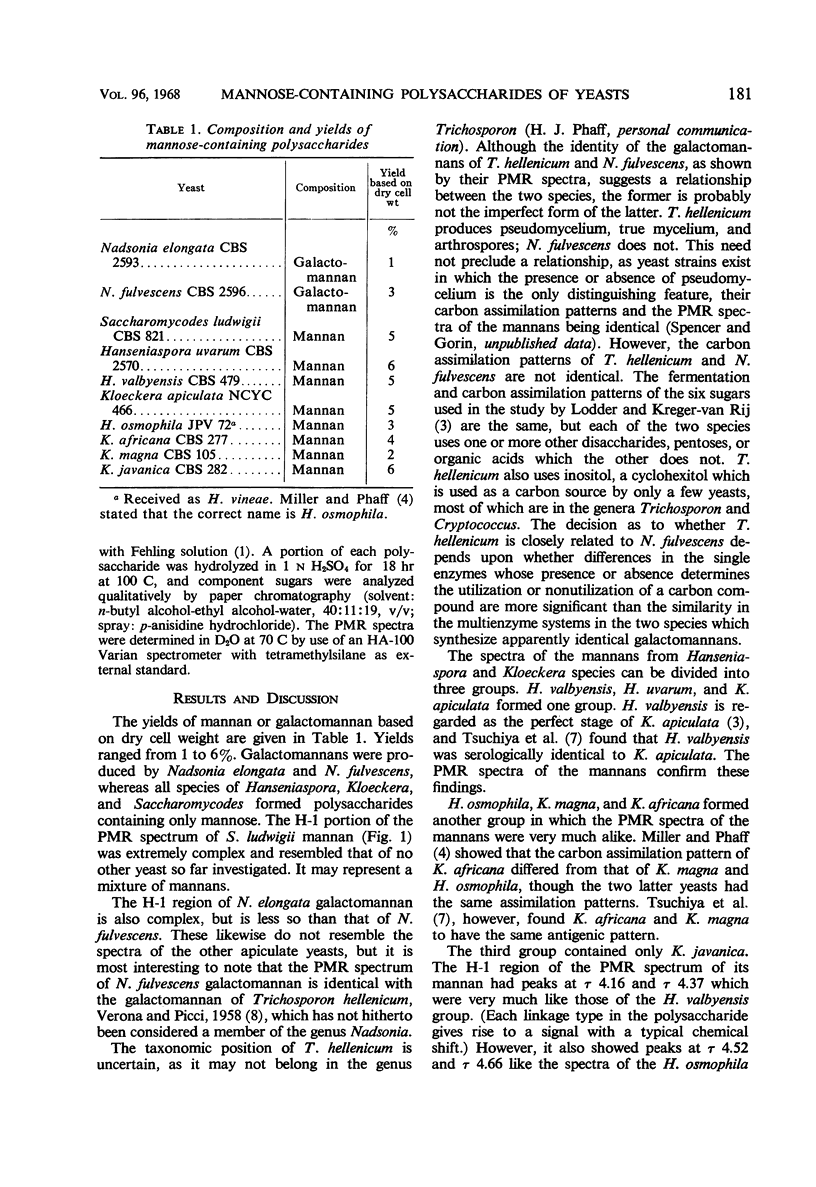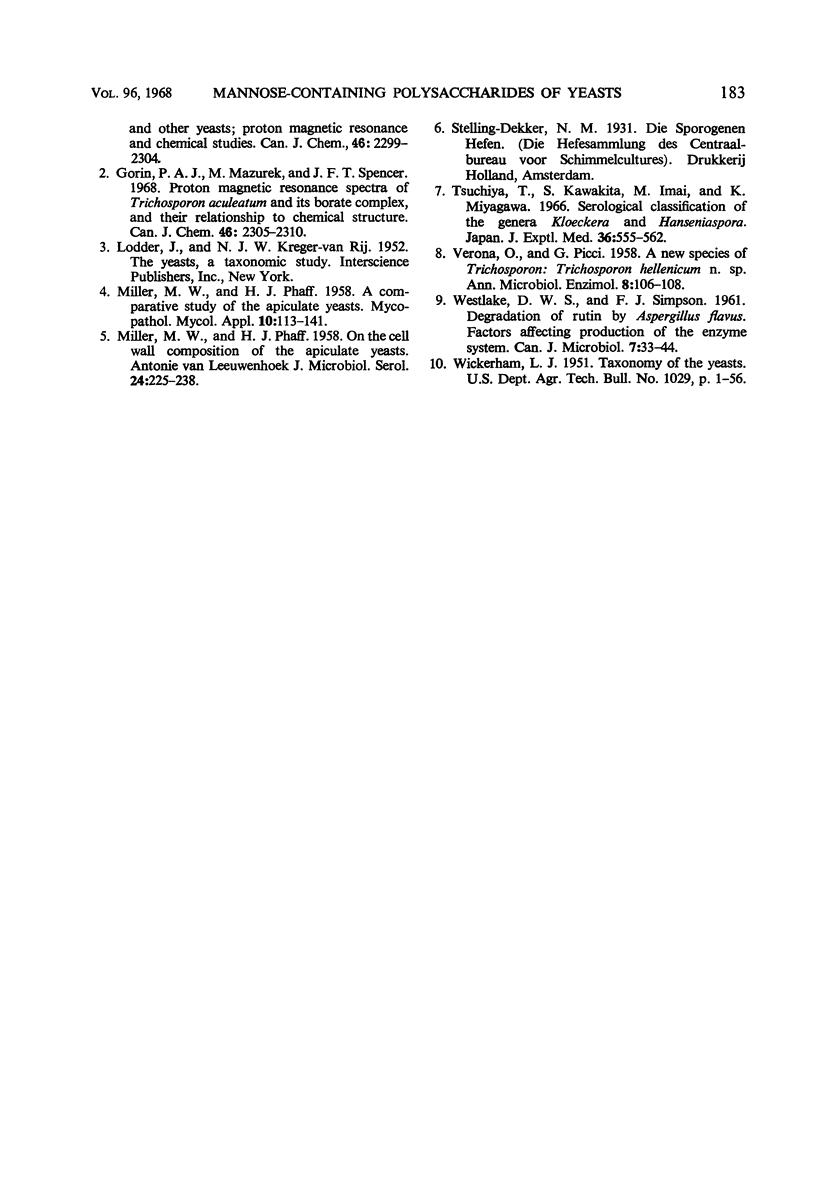Abstract
The mannose-containing polysaccharides formed by species of Nadsonia, Hanseniaspora, Kloeckera, and Saccharomycodes were extracted with hot aqueous alkali and purified by precipitation as their copper complexes. N. fulvescens and N. elongata formed galactomannans, while Hanseniaspora and Kloeckera species and S. ludwigii formed mannans. H. valbyensis, H. uvarum, and K. apiculata were a group which formed mannans which had identical H-1 regions in their proton magnetic resonance (PMR) spectra, and H. osmophila, K. africana, and K. magna mannas formed another group based on similar spectra. K. javanica formed a mannan with an H-1 spectral region which resembled that of the H. valbyensis group in some respects and that of the H. osmophila group in others. The H-1 portion of the PMR spectrum of S. lugwigii mannan was very complex and was unlike that of any other apiculate yeast studied.
Full text
PDF



Selected References
These references are in PubMed. This may not be the complete list of references from this article.
- MILLER M. W., PHAFF H. J. A comparative study of the apiculate yeasts. Mycopathol Mycol Appl. 1958 Dec 30;10(2):113–141. doi: 10.1007/BF02055037. [DOI] [PubMed] [Google Scholar]
- Tsuchiya T., Kawakita S., Imai M., Miyagawa K. Serological classification of the genera Kloeckera and Hanseniaspora. Jpn J Exp Med. 1966 Dec;36(6):555–562. [PubMed] [Google Scholar]
- WESTLAKE D. W., SIMPSON F. J. Degradation of rutin by Aspergillus flavus. Factors affecting production of the enzyme system. Can J Microbiol. 1961 Feb;7:33–44. doi: 10.1139/m61-005. [DOI] [PubMed] [Google Scholar]


